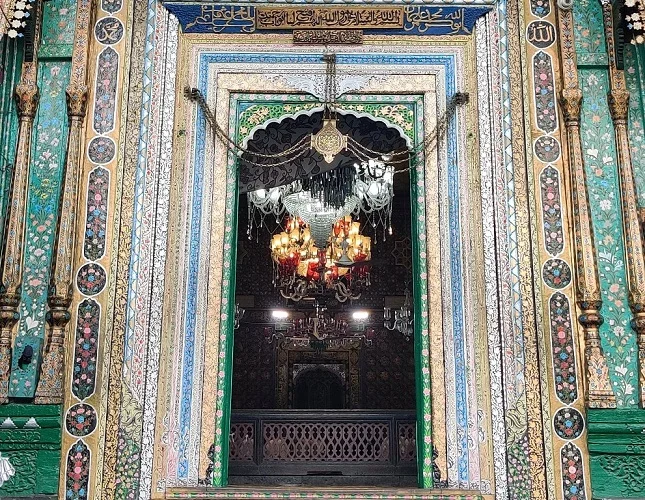
The designs on the walls of the Alhambra in Spain to the Selimiye Mosque in Konya or, closer home, the Khanqah-e-Moula are visual evidence of the infinite design opportunities that are contained in simple geometric forms, made possible with elementary tools.
By Shubhanjana Das
IF you can wrest your eyes away from the harlequin colours of the intricate Papier-mâché hand-painting on Srinagar’s Khanqah-e-Moula’s front deck, and look inside the halls of this venerated sanctum, your eyes will be enraptured by intricately carved khatamband hand-painted in jewel tones.
Besides being one of the oldest mosques in Kashmir, Khanqah-e-Moula is a study into Islamic design and its radical experiment in geometry and form practiced in the Islamic world spanning from Persia, the Middle East, Central Asia, North Africa, Iberia and parts of India from the 8th Century onwards.
With Kashmir’s history being interlaced with erstwhile Persia and its cultural as well as religious practices, the influx of what is now an open air encyclopaedia of Islamic design is hardly surprising.
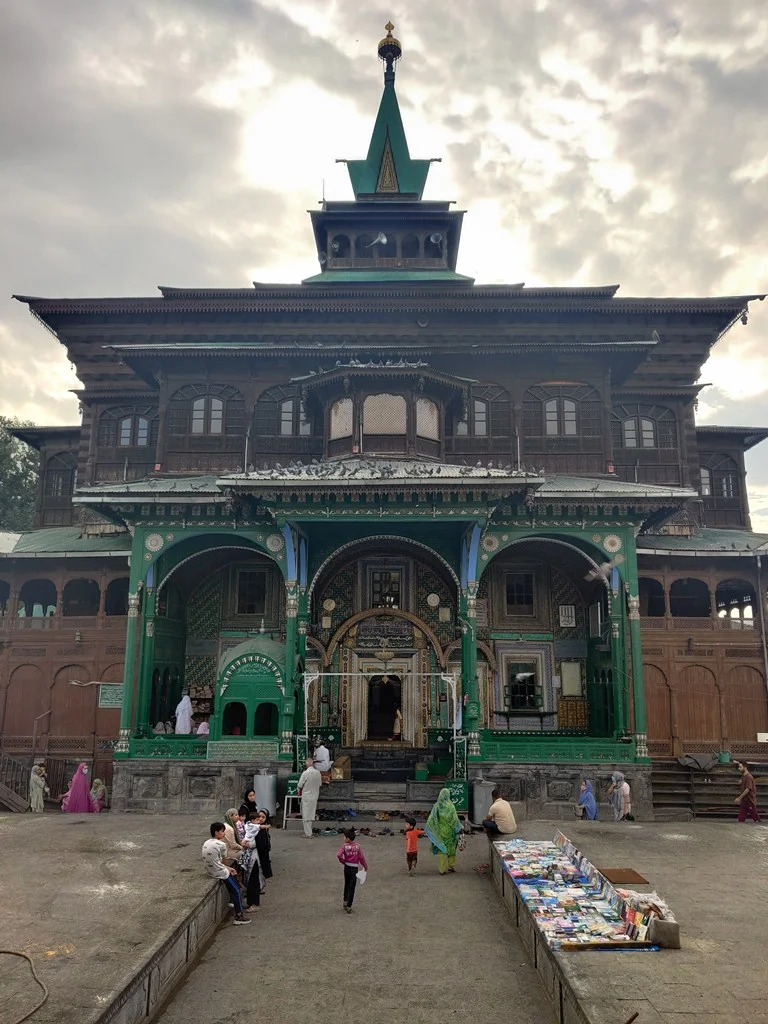
The Islamic world’s contribution to mathematics is pivotal in the advancement of the subject with scholars bringing the worlds of Indian and Greek mathematical developments together.
One of the most celebrated achievements of Islamic mathematicians lies engraved on the walls of Islamic religious institutions across the world in the form of complex geometric patterns on mosques, shrines, seminaries, and residential buildings, amplifying mathematics to an immortal art form.
“Any element of design which features prominently in Islamic Muslim religious architecture can be defined as Islamic design,” notes Hakim Sameer Hamdani, Design Director at INTACH Kashmir and a PhD scholar in Islamic Architecture.
“One of the easily identifiable markers is the refrain from using figural depiction; it’s not a total exclusion, but generally there’s a tendency to make things more abstract and to avoid such depictions anywhere.
Geometry, Hamdani says, is something that’s very well-established across regions, and timeframes in the body of the Muslim civilisation.
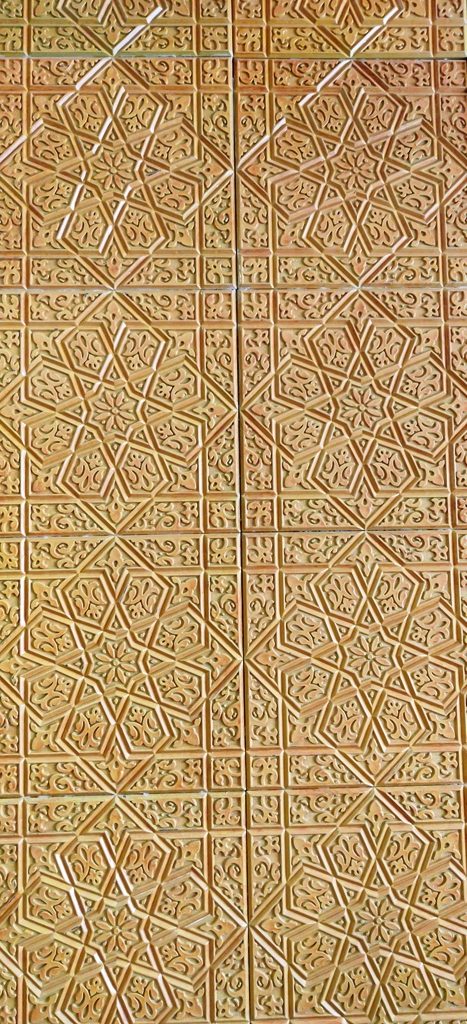
It’s in geometry that the mathematical elegance of Islamic design takes root.
But unlike the complex visual outcomes of these designs, the foundation is elementary; no matter how intricate the design, they can all be conceived on the parma, the trace of the design, with the help of a pair of compasses, an iron nail, and a thread.
“A good part of it [Islamic design] is dedicated to mathematics,” Hamdani continues.
“There’re certain motifs which couldn’t have been worked about without a very precise understanding of geometry and mathematics. You’ve a geometrical form, so there’re innumerable expressions that you can give to it.”
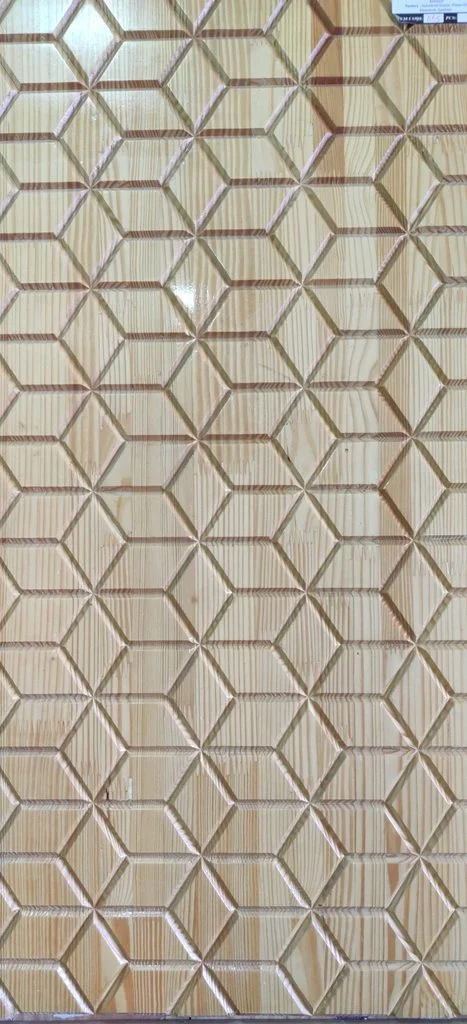
The designs on the walls of the Alhambra in Spain to the Selimiye Mosque in Konya or, closer home, the Khanqah-e-Moula are visual evidence of the infinite design opportunities that are contained in simple geometric forms, made possible with elementary tools.
But to simplify Islamic design and break it down to just figures would be undermining hundreds of years of craftsmanship and excellent design.
For it’s the intelligently calculated mathematical puzzle, variations and repetitions (known as tessellation) in geometric shapes, and abstraction that result in the bewitching designs that inspire wonder and contemplation.
“At the end,” Hamdani says, “it’s the variation in terms of one single motif.”
Islamic design essentially is a composition of triangles, rectangles, squares, circles, etc., which are basic geometric figures, he explains.
“But the overall idea is how varied a pattern can be designed. It gives multiple opportunities for the craftsman. It’s that variation in the pattern, that appeals to the human eyes and the sense of aesthetics to a large extent.”
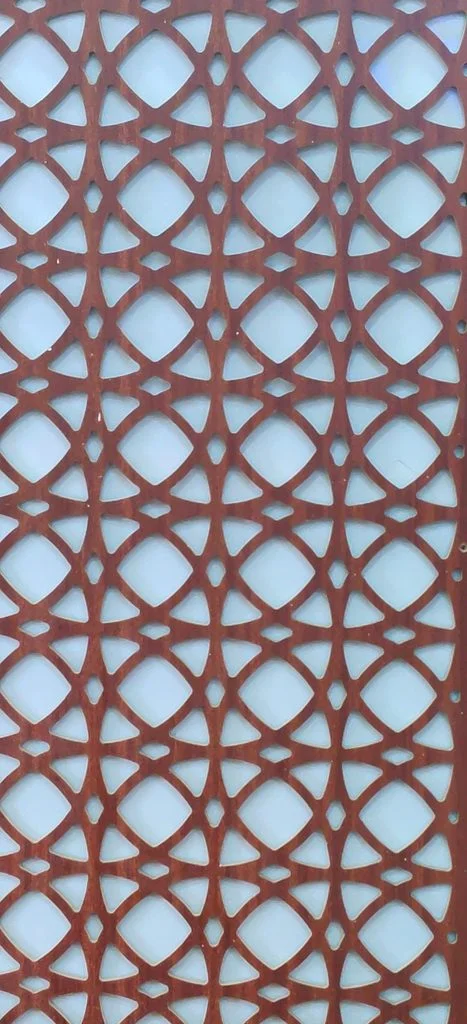
In the case of Kashmir, geometric shapes are omnipresent in pinjras, some of the most intricate ones to be found in shrines.
“If it’s an octagonal star, you’ll find that in eight different windows,” the design director says. “You have eight different patterns.”
But, because of that unified theme of geometry, he says, one doesn’t seem to be different from the other visually, but what commands visual attention is how each pattern is unique to that one single window.
The understanding of geometry in Islamic design has been passed from generation to generation wherein artisans work with a certain basic module with most of them traditional and unchanged over time.
But with dwindling numbers of skilled artisans in Kashmir, there’re doubts of whether hand-done pinjrakari or the traditional Khatamband will see through the test of time.
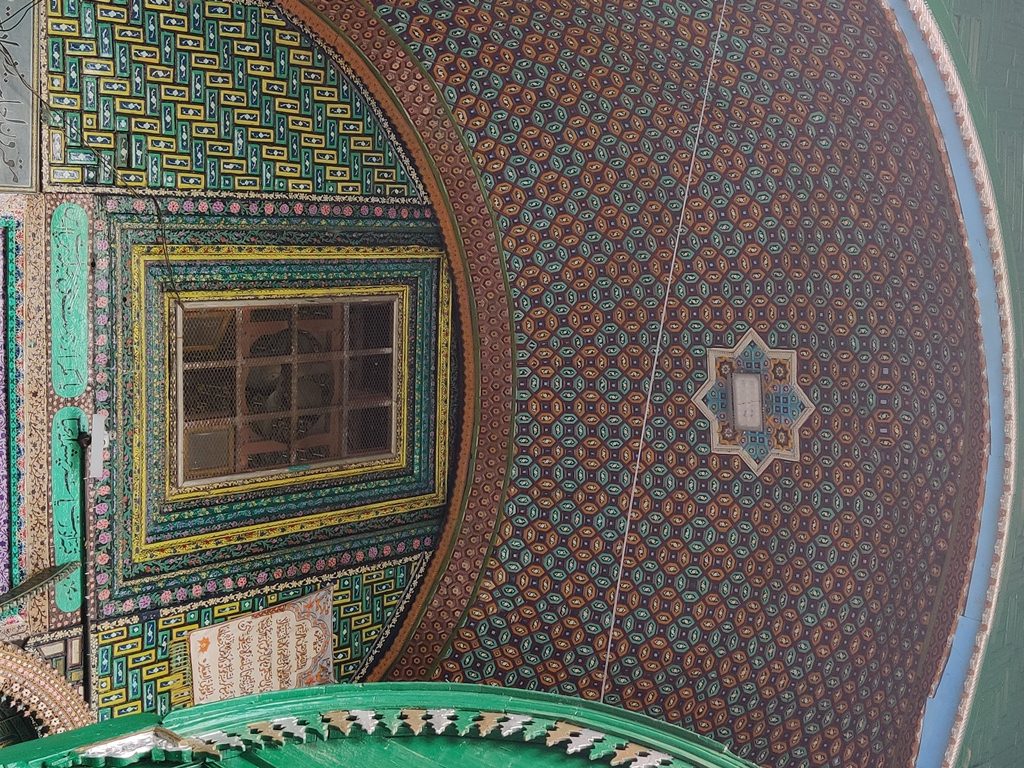
Atif Lone, 28, is a pinjrakari artist based in Downtown Srinagar who’s one of the few young people willing to learn the craft and become its next generation of torchbearers.
Lone left his commerce degree to become a first-generation pinjrakari artist to introduce new designs and revitalise the art in local households.
While he may be using CAD for making some of his designs, his basis remains the grids of a graph paper, pencil, and a set of compasses for sketching out hundreds of innovative pinjrakari designs, further demonstrating how geometry makes for Islamic design’s polestar.
While geometric shapes are sacrosanct to most Islamic religious institutions, the essence of its design remains universal and timeless.
Hamdani believes that geometry, being equivocal in nature, is open to any culture: “It’s a basic arithmetic solution to a certain problem, so it’s not religious, but very secular in its appeal.”
Follow this link to join our WhatsApp group: Join Now
Be Part of Quality Journalism |
Quality journalism takes a lot of time, money and hard work to produce and despite all the hardships we still do it. Our reporters and editors are working overtime in Kashmir and beyond to cover what you care about, break big stories, and expose injustices that can change lives. Today more people are reading Kashmir Observer than ever, but only a handful are paying while advertising revenues are falling fast. |
| ACT NOW |
| MONTHLY | Rs 100 | |
| YEARLY | Rs 1000 | |
| LIFETIME | Rs 10000 | |











